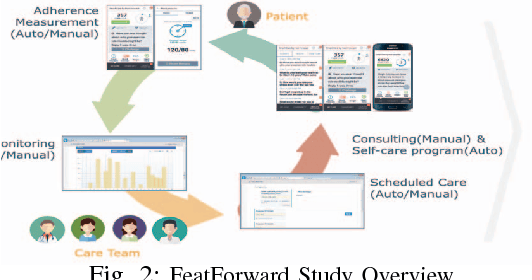Recurrent Neural Networks based Obesity Status Prediction Using Activity Data
Paper and Code
Sep 20, 2018



Obesity is a serious public health concern world-wide, which increases the risk of many diseases, including hypertension, stroke, and type 2 diabetes. To tackle this problem, researchers across the health ecosystem are collecting diverse types of data, which includes biomedical, behavioral and activity, and utilizing machine learning techniques to mine hidden patterns for obesity status improvement prediction. While existing machine learning methods such as Recurrent Neural Networks (RNNs) can provide exceptional results, it is challenging to discover hidden patterns of the sequential data due to the irregular observation time instances. Meanwhile, the lack of understanding of why those learning models are effective also limits further improvements on their architectures. Thus, in this work, we develop a RNN based time-aware architecture to tackle the challenging problem of handling irregular observation times and relevant feature extractions from longitudinal patient records for obesity status improvement prediction. To improve the prediction performance, we train our model using two data sources: (i) electronic medical records containing information regarding lab tests, diagnoses, and demographics; (ii) continuous activity data collected from popular wearables. Evaluations of real-world data demonstrate that our proposed method can capture the underlying structures in users' time sequences with irregularities, and achieve an accuracy of 77-86% in predicting the obesity status improvement.
 Add to Chrome
Add to Chrome Add to Firefox
Add to Firefox Add to Edge
Add to Edge